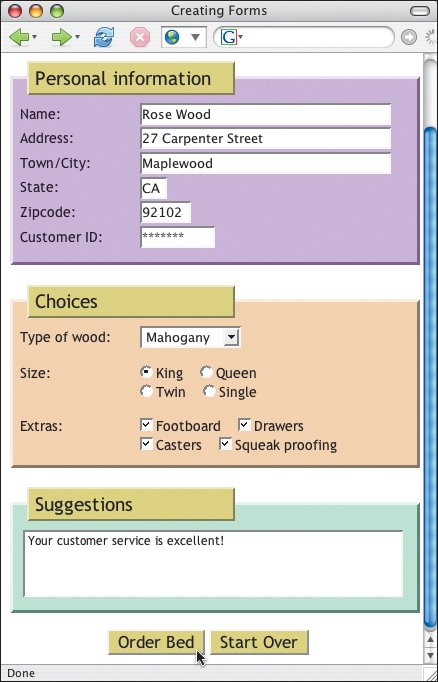Creating a Form
| A form has three important parts: the form tag, which includes the URL of the script that will process the form; the form elements, like fields and menus; and the submit button which sends the data to the script on the server. Figure 17.1. Every form has three parts: the form tag, the actual form elements where the visitor enters information, and the submit button (or active image) that sends the collected information to the server. To create a form:
|
EAN: 2147483647
Pages: 340
- Challenging the Unpredictable: Changeable Order Management Systems
- The Second Wave ERP Market: An Australian Viewpoint
- The Effects of an Enterprise Resource Planning System (ERP) Implementation on Job Characteristics – A Study using the Hackman and Oldham Job Characteristics Model
- Context Management of ERP Processes in Virtual Communities
- Data Mining for Business Process Reengineering


 Tips
Tips
